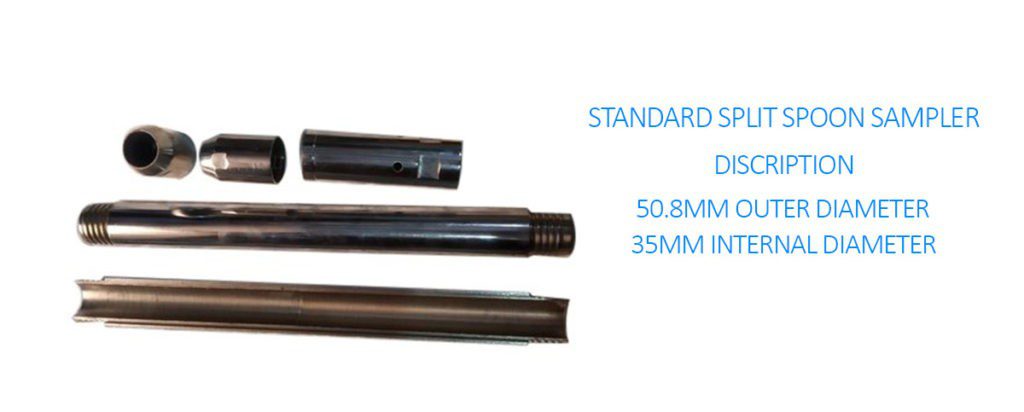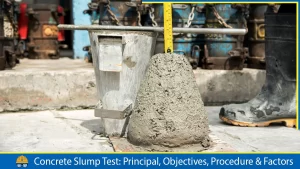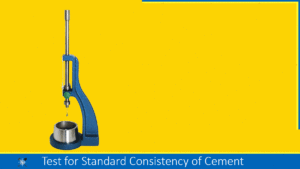These tests involve the measurement of the resistance to penetration of a sampling spoon, a cone or other shaped tool under dynamic or static loadings. The resistance is empirically correlated with some of the engineering properties of soil, such as bearing capacity, density index, etc.
Types of Penetration Test
There are two common types of penetration tests used and they are: –
- Standard penetration test
- Dutch cone test
Standard Penetration Test
The standard penetration test is an in-situ test that is performed in a clean hole, 55 to 150mm in diameter. The test will measure the resistance of the soil strata to the penetration conducted.
Tools for Standard Penetration Test
The requirements to conduct SPT are:
- Standard Split Spoon Sampler
- Drop Hammer weighing 63.5kg
- Guiding rod
- Drilling Rig.
- Driving head (anvil)

Procedure for SPT
The test is conducted in a borehole by means of a standard split spoon sampler, 50.8mm outer diameter and 35mm internal diameter. The split spoon sampler is driven into the undisturbed soil at the bottom of the hole under the blows of 65kg drive weight with 75cm free fall. The minimum opening of the split spoon is 60cm.
This procedure is as prescribed in the IS -2131:1963. The sampler is first driven through 15cm depth as a seater drive. The number of blows recorded for the first 15cm is not taken into consideration. It is further driven through 30cm and the number of blows required is recorded. This number of blows is termed as penetration resistance N or otherwise it is referred to as: –
N is the number of blows required for 15cm penetration beyond the seating drive of 15cm.
If the N-value exceeds 50 blows, then the test is discontinued and is called a “refusal”. The result interpreted by the standard penetration number is corrected for dilatancy correction and overburden correction for the use of estimating the result of geotechnical engineering properties of the soil.
Corrections in Standard Penetration Test
As per IS 2131 – 1981, the ‘N’ value has to be corrected before using in empirical correlations and in design charts. The correction is as follows: –
- Dilatancy Correction
- Overburden Pressure Correction
Dilatancy Correction
Silty sand, fine sand or saturated sand is observed to have an increased occurrence of resistance. When such a condition is observed, Terazghi and Peck have recommended the use of an equivalent penetration resistance Ne in place of the actual observed value of N when is greater than 15. Therefore, Ne is given by the following relation:
Ne = 15 + 1/2 + (N – 15)
Where Ne is the corrected value and N is the recorded value.
Overburden Pressure Correction
Over the course of tests conducted several times, it is found that the penetration resistance or the value of N is dependent on the overburden pressure. The corrected value of ‘N’ is
Ne = Cn x N
Where Cn is the correction factor for the overburden pressure.
Precautions for Standard Penetration Test
- The split spoon sampler must be in good condition.
- The cutting shoe must be free from wear and tear
- The height of the fall must be 750mm. Any change from this will affect the ‘N’ value.
- The drill rods used must be in standard condition. Bent drill rods are not used.
Advantages of Standard Penetration Test
The advantages of standard penetration tests are:
- The test is economical
- The test procedure is relatively simple to perform.
- Soil samples collected can be used for the identification of soil types.
- The test provides representative samples for visual inspection, classification tests and moisture content.
- Actual soil behaviour is obtained through SPT values
- The method helps to penetrate dense layers and fills
- The test can be applied to a variety of soil conditions
Disadvantages of Standard Penetration Test
The limitations of standard penetration tests are:
- The results will vary due to any mechanical or operator variability or drilling disturbances.
- The test is time-consuming.
- The samples retrieved for testing are disturbed.
- It is difficult to remove the sampler from the hard layer.
- The test results from SPT cannot be reproduced
- The application of SPT in gravels, cobbles and cohesive soils is limited
Also, read: Vane Shear Test for Shear Strength of Soil
References:
- Bureau of Indian Standards (1963). IS 2131 : 2022. Standard Penetration Test Of Soil — Method of Test. (2nd rev.) Bureau of Indian Standards. https://www.services.bis.gov.in/tmp/WCCED21221115_25102022_1.pdf
- Punmia, B.C 2006, Building Construction, Laxmi Publication Pvt. Ltd., New Delhi.
- Venkatramaiah. C. (2006). Geotechnical Engineering. New Age International Publication
- Geotechnical engineering news & technical resources for geotech professionals. (n.d.). Geoengineer.org. https://www.geoengineer.org/
![]()






